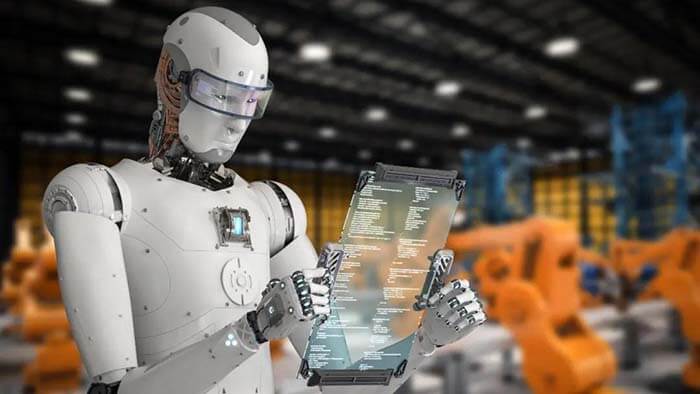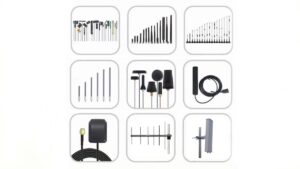Intelligent devices such as collaborative robots are also actively embracing 5G and upgrading technology, what is the future of 5G for robotics?
5G development and deployment are accelerating, especially in Asia. Various on-site tests are underway and product components are about to be launched. The test targets multiple scopes. What are the challenges of 5G for robotics, and how does the 5G for robotics ecosystem form?
How does the 5G for robotics ecosystem form?
If robotics and cellular communications seem like strange partners, it’s because 5G wireless technology New radio 5G not only boosts data rates like its predecessor but also wirelessly addresses the needs of such applications. Because it is the first technology to increase coverage.
This ambitious standard, called IMT-2020 by the International Telecommunication Union (ITU), the regulator of the global telecommunications industry, describes how cellular networks can be built, connectable devices, operating frequencies, and applications. Bring a revolution to achieve this goal.
Fifth-generation wireless technology will pave the way for a new generation of robots. Some of them are free to roam over wireless rather than wired communication links and take advantage of cloud computing and data storage resources. These features allow you to dynamically and accurately control your robot in near real-time and connect with people and machines locally and globally.
In short, 5G NR fully supports applications such as future factories, as well as many applications that previously went beyond the capabilities of cellular and robotics.
Already has 5G for robotics, why still need humans?
There is a lot of controversy surrounding robots today, some of which, along with artificial intelligence (AI), involves the rather harsh future of human destiny as to how robots dominate the world.
Robot proponents believe that robots complement humans rather than replace them and that robots can perform functions that humans are not good at.
On the other hand, in manufacturing and other industries, some believe that robots can replace humans, thereby saving millions of jobs.
It’s not yet known if robots will ultimately look down on humans, but 5 G’s new radio will almost certainly allow robots to work more efficiently and serve more applications.
Robots are ubiquitous in the manufacturing industry, and the automotive industry may be the most obvious example. Examples of other major applications include industry and healthcare.
5G innovations extend their capabilities even further, so we need to extend the true definition of robots. For example, self-driving cars are robots that execute commands from numerous sensors to make decisions and perform functions, which are more accurate, reliable, and faster than humans.
UAVs and other drones also fall into this category. There is no better way than medical care to understand the synergies of the new 5G for robotics. In the medical field, robots have great potential.
Robots not only perform normal functions such as moving things from one place to another in the hospital with the help of 5G communication and the cloud but also remote surgery, that is, doctors arrange surgery remotely. The robot does local surgery.
Imagine moving the time around 2025 and imagining a hospital operating room crowded with robots and humans coordinating with surgeons anywhere on the planet through 5G and the cloud.
They can get help from experts in one or more locations, all of whom can provide expertise in real time. This may seem strange, but it’s just the beginning. Using virtual reality (VR) and ubiquitous cloud technology, you should be able to transform image scans into virtual three-dimensional (3D) patient performance.
Using this digital clone, the surgeon remotely coordinates the virtualized patient’s operation while one or more robots perform the actual operation. Bones, tissues, and organs all have different sensations, so doctors will have a tactile yet virtual experience.
Comprehensive remote surgery measures may not be available within 10 years but will continue to make gradual progress as 5G for robotics mature.
Why not the correct time of 5G for robotics now?
Except for the fact that the entire robot and ecosystem needed to implement remote surgery and other next-generation robot applications are still in their infancy, the current 4G network has to make them possible. The required function is missing.
They require near-instantaneous response times, so we need to reduce the metric called latency to unprecedented levels.
Latency is basically the time it takes to start typing at one point on a communication link and then return from another point with error-free input. Low latency is essential for the high reliability of machine-centric communications in the future of robotics.
Today’s 4G Long Term Evolution (LTE) cellular networks have a round trip delay of about 50 ms, but the 5G standard recognizes that less than 1 ms is required to support applications such as robots. This is a major technical challenge.
Compared to reducing latency to such a small level, other promised benefits of 5G (such as cloud computing and increased data rates) are relatively relative because they face certain physics laws. It’s simple.
Further considerations such as fiber optics, terrestrial and satellite communication links, electronics, and interconnects through which signals must pass will significantly reduce propagation speeds. As a result, the shorter the physical distance between points A and B, the shorter the delay time. Here’s how 5G achieves its goal of reducing this metric to less than a millisecond.
With 5G, the number of data centers that make up the cloud needs to grow significantly geographically. This is because the data center in one location is too far from most other locations to reduce the delay to an acceptable level.
This extension, combined with data rates above 1 Gb / s and the use of new mobile phone frequencies (one order of magnitude higher than currently used frequencies), is combined with 1 millisecond to cover distances from 1 to 1. It is an integral part of less than a delay. 100 km.
Factory rethinks the 5G for robotics
5G plays an important role in creating future factories, another application with a delay of less than 1 millisecond. Combined with nearly unlimited processing in the cloud and data storage, 5G communications enable robots in next-generation manufacturing environments to do more than they do today.
Robots will be able to exchange large amounts of information between robots and factory employees, revolutionizing workshops with other 5G-enabled devices (such as wearables) and augmented reality (AR) technology.
Engineers can control and inspect automated robots in smart factories. Being able to move robots and interact with humans can significantly improve production throughput while improving product quality and operator safety.
To maintain very low latency across the rebuilt factory, you need to rely heavily on edge computing in your network. Edge computing brings intelligence and capabilities to the edge of the network where real-world applications are located, much like distributed computing did decades ago.
Field robot in 5G for robotics
Unbinding robots with 5G and GPS-based positions enables robots to perform functions that are currently impossible.
For example, in the agricultural sector, robots can walk through fields, monitor growth, send videos and other sensor information back to computers almost everywhere, and even perform activities such as spraying, pruning, and harvesting increase. A technique called high-throughput plant phenotyping (HTPP) can be used to combine genetics, sensors, and robots to develop new crop varieties and improve nutrient content and resistance to environmental conditions.
This is achieved by using robot sensors to measure various features and sending the results back to scientists who can be almost anywhere for analysis.
Other robots have been developed to plant and track seeds to improve the efficiency of agriculture, and there are many other aspects of agriculture that people are currently engaged in.
In the future, many may be run by 5G for robotics remotely controlled machines.
5G for robotics summarize
It is important to remember that 5G for robotics does not change robots overnight, as many applications and technologies to achieve this goal are currently under development or in the design phase.
On the contrary, 5G for robotics should be seen as the beginning of a new era of telecommunications, the first full realization of robots, and many other applications. In addition, mobile robots have a long way to go before they become mature technologies. Large-scale applications from manufacturing and production to agriculture, search and rescue operations, and large-scale search and rescue operations can take years.
5G for robotics requires many innovations in every aspect of the network, from the development of millimeter-wave communication systems to software-defined virtual network architectures. We also need a new wireless access method that allows many robots to operate in tight areas without interference from each other. Hidden behind all this is latency, and researchers must find ways to reduce it to less important levels.
Do you have comments on the 5G for robotics? if so, contact us and let us know.




